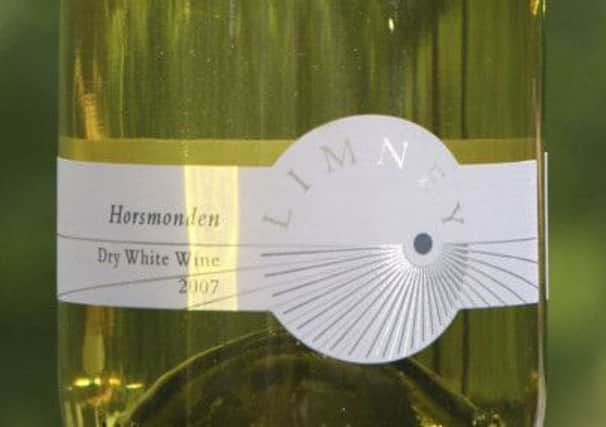Wine: England’s homegrown heroes


Cool temperatures might suit UK vineyards growing grapes for sparkling wine, which needs grapes with high acidity, but you wonder what the future holds for still wines with our less than sunny summers.
While there has been a 75 per cent increase in plantings of vineyards in the UK since 2004, the majority are focusing on sparkling wines with champagne grapes chardonnay and pinot noir among the most popular planted. Half of the four million bottles produced in the UK annually are sparkling and this is set to increase. A glance at the International Wine Challenge 2013 results says it all – three gold medals to English sparkling wines, one to an English dessert wine – but no gold medals to still, dry wines.
Advertisement
Hide AdAdvertisement
Hide AdEnglish still wines have a long history stretching back to Roman times – with 46 vineyards recorded in Southern England at the time of the Domesday Book in 1086 – before the 17th-century mini ice age destroyed vinous ambitions here. Since the 1950s revival, we now have 400 vineyards from Cornwall to Worcestershire – many producing still wines – such as Biddenden, Chapel Down, Camel Valley, Denbies and Astley.
Hardy grape varieties such as bacchus and ortega work best, though some believe that chasselas – a grape popular in Switzerland’s high-altitude vineyards – could have potential, When it comes to reds, while pinot noir and gamay are planted, I have yet to find one that is really palatable.
So why buy English still wines? Firstly, you might want to support your own country’s winemakers – and reduce the world’s carbon footprint. Secondly, the moderate alcohol levels at just 11.5 per cent compared to the standard 13-14 per cent in New World wines, make English wines very tempting as light summer aperitifs. The floral and elderflower flavours offer something a bit different, a style that would appeal to lovers of lighter whites from Loire or Germany.
The disadvantages are that due to our marginal climate, the wines do not taste as ripe and fruity as those from sunnier European or New World climates – and most importantly they cannot compete on price. It costs £12 or £15 for the best of British, but a very quaffable alternative from New Zealand or Chile is half that price.
Vintages in the UK also vary considerably; 2011 was a tricky, small, vintage, so we had to kiss a lot of frogs before finding our list below. The good news is that 2012 had a good spring and warm, dry, late summer – so a good vintage will soon be on the shelf. As for 2013, Bob Lindo of Camel Valley says that despite the season running four weeks late, there has been no frost damage, so it is “still all to play for”.
While English still wines have novelty and curiosity value, it’s worth discovering their unique taste. Try one of my selection, or, if you are ever in the area, visit The English Wine Centre in East Sussex (www.englishwine.co.uk) and sample from a selection of 140 different English wines.
Kent Biddenden Ortega 2011
(£10-£13, Harvey Nichols, Edinburgh)
Blossom and hedgerow notes, medium bodied (just 11.5 per cent alcohol) with good fresh acidity – this has been awarded Best Kent Wine for two years running.
Sussex Limney Horsmonden Dry White 2011
(£15, Harvey Nichols; £11.15, www.davenportvineyards.co.uk)
A very attractive dry white blend of six different grapes made by Davenport Vineyards – with alcohol at just 11.5 per cent. This is the best still English wine I have tasted – it would definitely appeal to lovers of Kiwi sauvignon blanc. STAR BUY
Cornwall Camel Valley Bacchus Dry 2011
(£12.50, www.camelvalley.com; £11.15, www.bbr.com)
Advertisement
Hide AdAdvertisement
Hide AdZesty elderflower and citric notes, another which would appeal to sauvignon blanc lovers. Bob and Sam Lindo of Camel Valley are known for their sparkling wines, but they also make this one very attractive, still dry white – a light match for seafood. This 2011 wine won the English wine producer’s trophy – and the same wine from the 2012 vintage has just won a silver medal at the Decanter wine awards.
Worcestershire Astley Veritas 2010
(£16, www.winepantry.co.uk)
Made from the interesting kerner grape, the off-dry sweet/sour notes would appeal to viognier lovers.
Join Rose’s beginners’ wine classes in Edinburgh and Glasgow from £35, www.rosemurraybrown.com